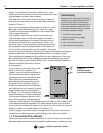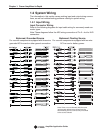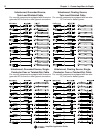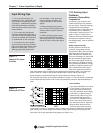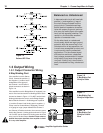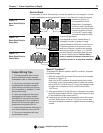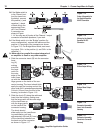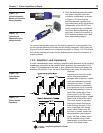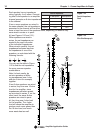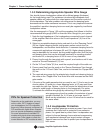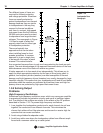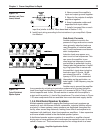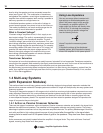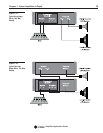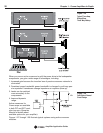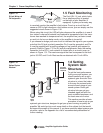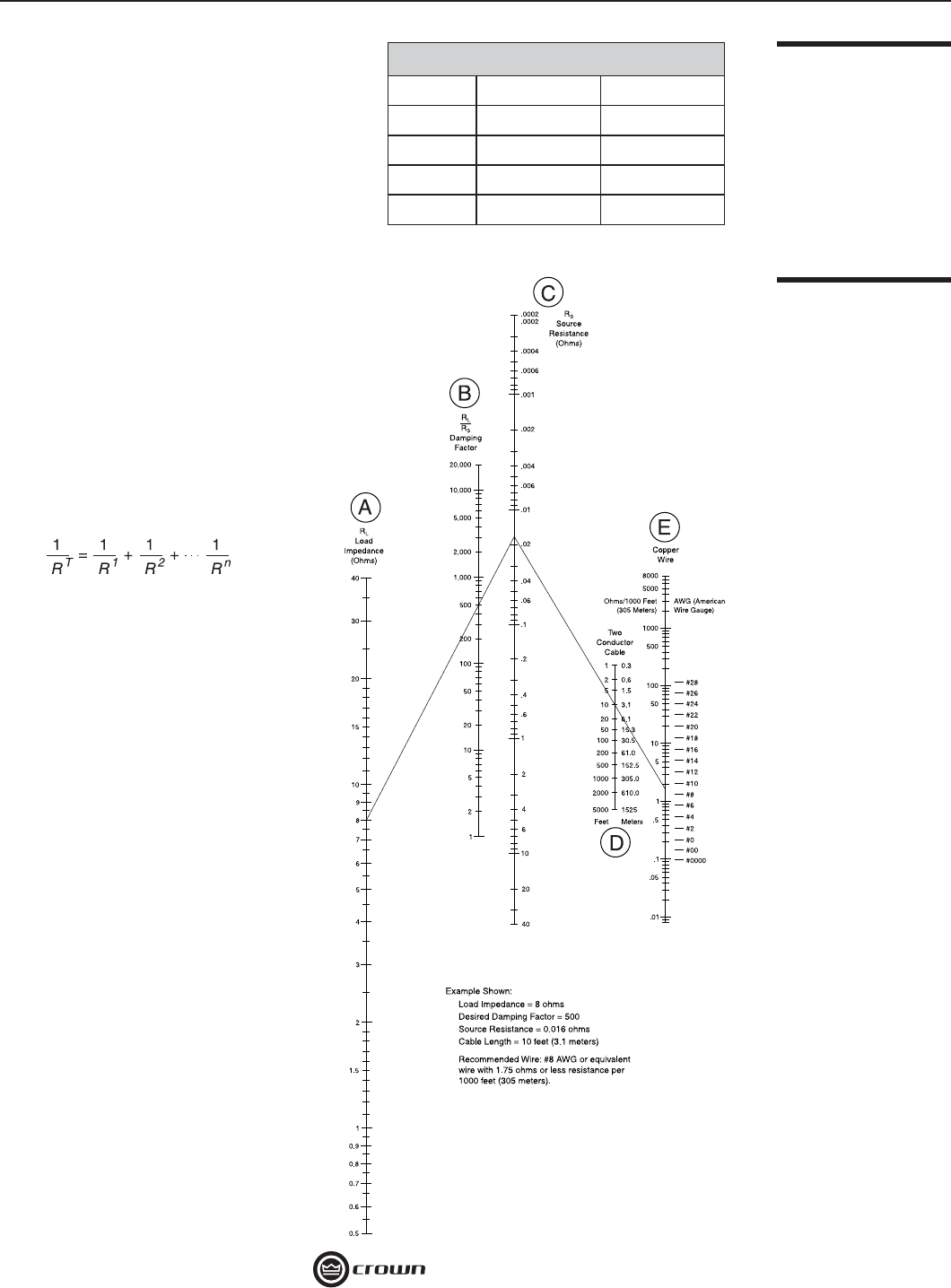
14 Chapter 1: Crown Amplifi ers In-Depth
Amplifi er Application Guide
Each speaker has an impedance
rating, typically 4 or 8 ohms. Connect-
ing one 8-ohm speaker to an amplifi er
channel presents an 8-ohm impedance
to the channel.
If two or more speakers are wired to
the same channel, the net impedance
presented to the channel will be either
more or less than one of the speakers alone, depending on whether they
were wired in series or in paral-
lel (see Figures 1.20 and 1.21).
When speakers are wired in
series, the net impedance pre-
sented to the amp is the sum
of the individual impedances.
When wired in parallel, the net
impedance becomes less than
the impedance of one of the
speakers, as calculated with the
following formula:
You can use the table in Figure
1.22 to fi nd the net impedance
for many common speaker
combinations.
Note: for best results, do
not wire speakers of differ-
ing impedances (one 4 ohm
and one 8 ohm for example)
together.
If two 8-ohm speakers are wired
in series, they form one 16-ohm
load for the amplifi er, since
impedances add when speak-
ers are wired in series. If, on the
other hand, the same 8-ohm
speakers are wired in paral-
lel, they form one 4-ohm load
for the amplifi er. The 4-ohm
load will cause the amplifi er to
produce much more power than
the 16-ohm load, and much
more waste heat as well.
secnadepmIlellaraP
srekaepSmhO4srekaepSmhO8
rekaepS1mhO4mhO8
srekaepS2mhO2mhO4
srekaepS3mhO3.1mhO7.2
srekaepS4mhO1mhO2
Figure 1.22
Parallel Impedance
Chart
Figure 1.23
Wire Size Nomograph.



